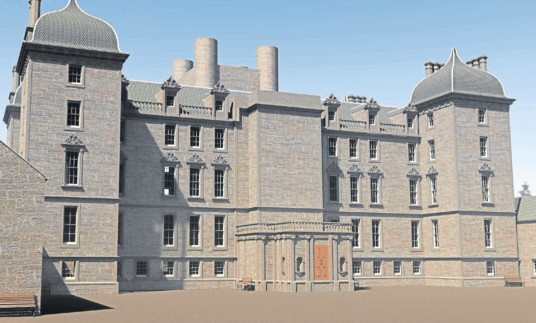A draughtsman has “scoured the world” for help in rebuilding the jewel of a former Angus estate at least on paper.
Marc Curran was bewitched by the 17th-Century Panmure House when he undertook a computer-aided design (CAD) project to rebuild it.
Redrawing the estate proved an “endless task” as the Dunfermline man uncovered or was sent more and more details about the edifice north of Carnoustie, demolished in 1955.
Marc is now calling for more help in his bid to recreate the centrepiece of an estate once called the grandest in Britain.
Marc said: “When I started off as a draughtsman five years ago I decided to teach myself 3D CAD modelling and rendering.
“I decided the reconstruction of the house would be the ideal learning vehicle.
“The house and estate has fascinated me ever since and I have gone to great length to ensure its accuracy in my work, meaning constant rebuilds each time I found new info or images that contradicted my progress.”
RCAHMS, the Royal Commission on the Ancient and Historical Monuments of Scotland, “kindly” supplied Mr Curran with its collection. However, there is another trove that would also help.
The architect David Bryce worked on the house as it was rebuilt in the 19th Century.
His drawings may still exist and Mr Curran is hopeful his descendants will come forward, as they may be in the collection of Lord Dalhousie, whose family and estates are linked to the former occupants.
